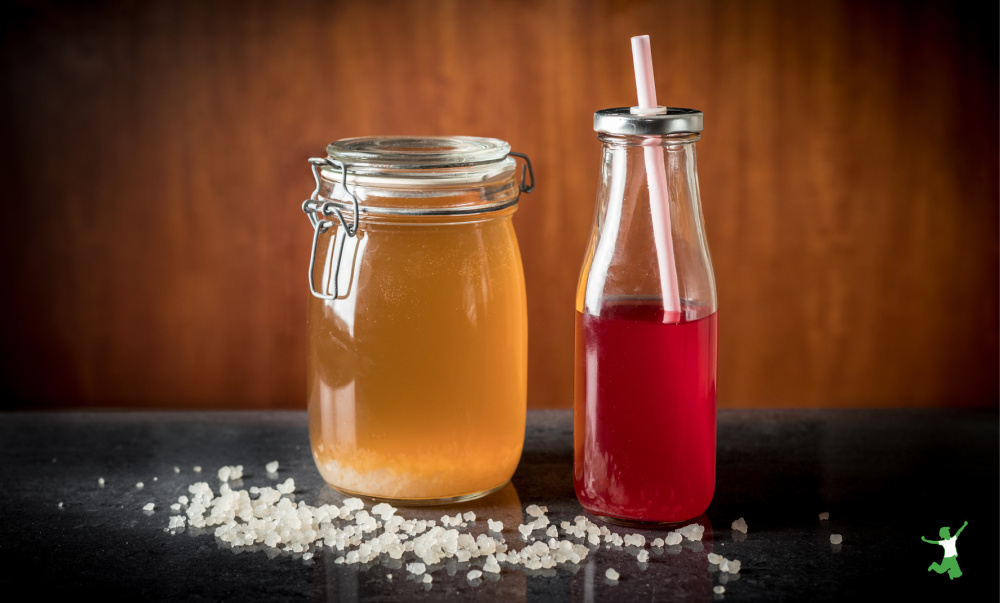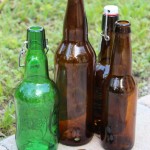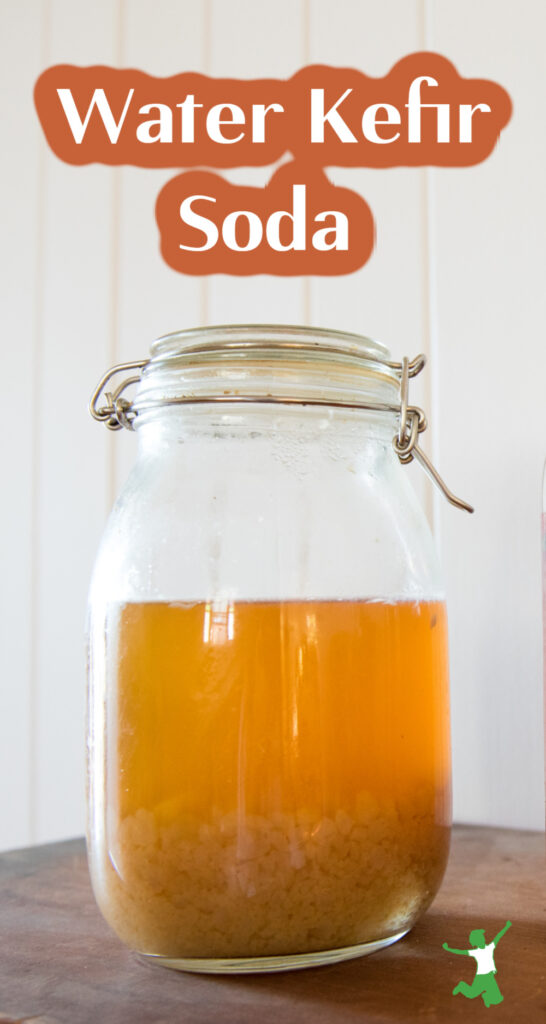How to make bubbly, fermented water kefir which is a traditional cultured beverage loaded with probiotics and enzymes. A healthy alternative to soda.

Many people are surprised to learn that soda is actually a traditional food! Of course, ancestral cultures did not sweeten fermented beverages artificially or add unhealthy chemicals and GMO sugar like today.
Water kefir is a very popular example of a healthy traditional beverage that is tasty, fizzy, satisfying and thirst-quenching without any of these additives.
Many people are familiar with homemade dairy milk kefir or coconut milk kefir. Be aware that a slightly different type of culture is used to make water kefir.
Water kefir grains look different than milk kefir grains. They also grow much faster, which is great because there is more to share with your friends!
The probiotic properties of water vs milk kefir grains vary quite a bit as well.
You should be able to procure some water kefir grains within your local community by asking your health-conscious friends or at farmers’ markets.
If you still cannot find some locally, you can order them from the vetted sources in my shopping guide.
If you wish additional flavor and fizz, be sure to bottle your homemade water kefir after it is finished culturing.

Homemade Water Kefir Recipe
Bubbly, homemade water kefir recipe that the whole family will enjoy to help kick the unhealthy soda habit once and for all!
Ingredients
- 1/4 cup water kefir grains
- 1 quart filtered water
- 1/4 cup sucanat
Instructions
-
Mix all the ingredients together in a mason jar leaving 1 inch at the top.
-
Screw on the lid and leave on the counter for 48 hours. Taste after 48 hours, and if it is too sweet, leave for another 24 hours. Taste again, if too sweet, leave another 24 hours. Repeat for up to 5 days until the a fermented, apple cider type flavor with minimal sweetness has been achieved.
-
Strain out the water kefir grains and refrigerate the liquid (no metal please), clean the mason jar, and repeat the process for a new batch of water kefir. You will have approximately double the kefir grains as they grow rapidly with each batch. You can give them away, eat them as a live probiotic, or make a larger batch of water kefir.
-
To add variety, you may also reduce the sugar to 1/8 cup, reduce the water to 3 cups, and add 1 cup of fresh fruit juice. Juice from the store is almost always pasteurized and as such, is not recommended as it significantly increases the risk of fermentation mold. Fresh juice has minimal mold issues when fermented and is much more nutritious, and is therefore best to use. If using fresh lemon or lime juice, keep the sugar at 1/4 cup and only use 1/2 cup fresh juice.
-
After fermenting, you may bottle the liquid to achieve extra fizz. This is an optional step. The picture with this step shows the types of bottles I use. Only fill the bottles to the bottom of the neck and leave on the counter for and additional 24-48 hours.

-
Chill well and open the bottles slowly over the sink as the level of carbonation is quite surprising!
-
To store your water kefir culture, place up to 1/2 cup water kefir grains in 1 quart of filtered water mixed with 1/4 cup sucanat, coconut sugar, or maple sugar and refrigerate until you are ready to use again.
Recipe Video
Recipe Notes
Maple sugar or coconut sugar may be substituted for the sucanat. Raw honey does not work as well in my experience.









If you go to Dom’s Kefir-making website, you’ll find more information than you’ll know what to do with on making different kefirs. http://users.chariot.net.au/~dna/Makekefir.html
He’s an expert.
what is the shelf life once refrigerated?
Shelly, I don’t know the answer for sure but I’m going to guess yes for a couple of reasons. First, I have a lot of those jars that I use for fermented vegetables and while they are fermenting I need to make sure I crack the jar occasionally to make sure the gas doesn’t build up and break the jar. Second, the recommended bottles have the same closure mechanism as these jars which would indicate they have a good seal.
Now all that said I wouldn’t try using the jars. They are much larger in volume and therefore would build up more pressure. With the large flat expanses of glass on those jars I doubt they were intended to take that kind of pressure. The smaller bottles are rounded and built to take some pressure. Just my opinion for what it is worth.
Hi Sarah. I realize this is an old post but it is sure a good one. I hadn’t heard about water kefir before and it sounds a lot easier than creating a fermentation liquid out of ginger. I clicked on the product link you provided and it goes to an Amazon page supposedly for the company Cultures for Health and their product is only about 7 dollars. Luckily I looked at the reviews. Turns out this is not Cultures for Health and their product is inferior. The real Cultures for Health web site sells their product for 16.99 at the moment. I’ll order directly from them. Thanks for all the wonderful videos. I’m new to the WP diet and already losing my excess weight and feeling better.
Hello all the way from Malaysia. Thanks for all your videos. Over here we too use water kefir grains and have tried strawberry flavour (need to remove the seeds) lemon and mango. But for acidic type of fruits, we only add it to the second fermentation process whereby the grains have been removed as I find that my grains can deteriorate. Keep up the great work.
Does anyone know if the canning jars with the gaskets (like these: ) would be airtight enough to build up carbonate in our kefir soda? Thanks!
Hi Erin, I was wondering about that too. I thought fructose was bad for you and cultures for health says it should still taste sweet and not to let it ferment longer than 48 hours?
I have a question regarding the sweetness of the finished product. I’ve done several batches and after 3-4 days the water is still almost as sweet as it started out with no obvious change in color or cloudiness to the water, yet the grains are multiplying like crazy. In your video you say it should not be sweet once it’s finished. Culturesforhealth says the grains turn the glucose into fructose which is sweeter than glucose. Well, I thought any more than a small dose of fructose wasn’t good for you, also I wonder why the company told me it’s normal (because of the created fructose) to taste pretty sweet–? It makes sense to me that it shouldn’t be sweet if left long enough, as my milk kefir looses it’s original sweetness. I do use the correct water/sugar/grains ratio. The grains are pretty new so probably will improve with time, but I’m more curious about the response from the company when I called them.
Thanks for any input you can provide!